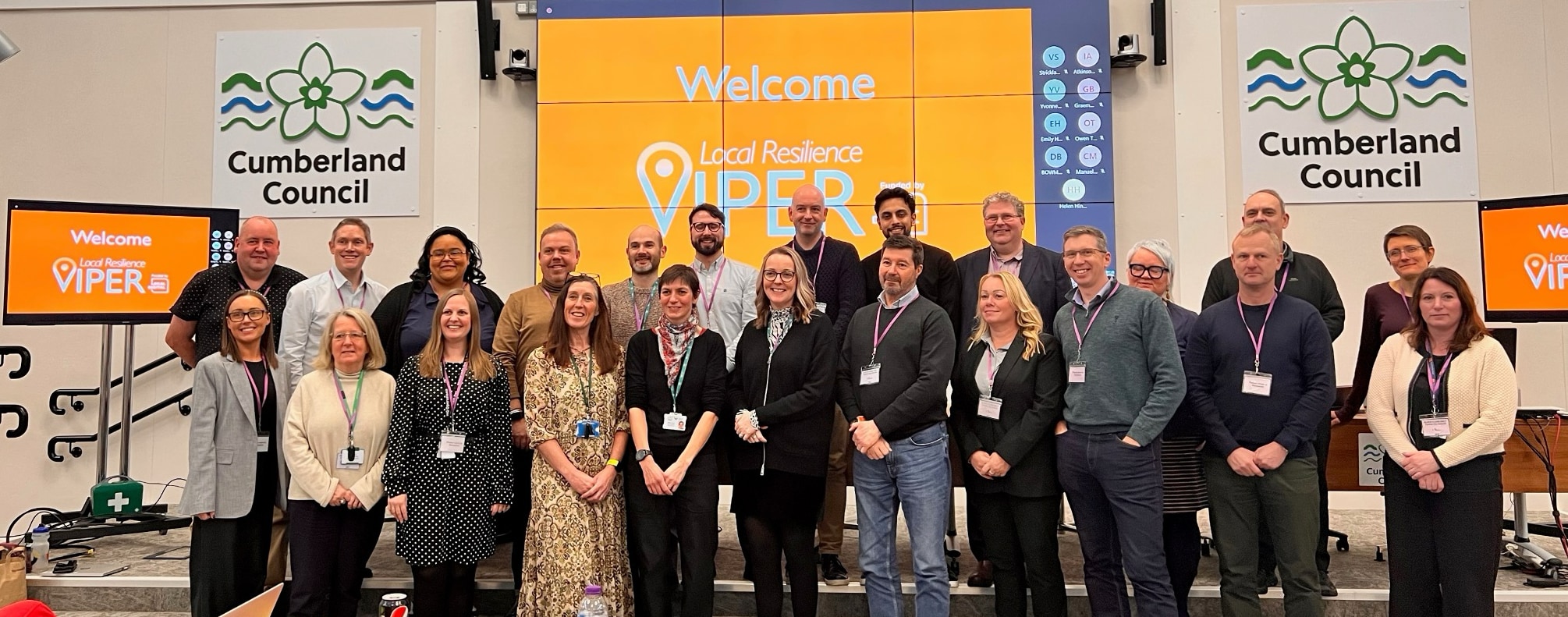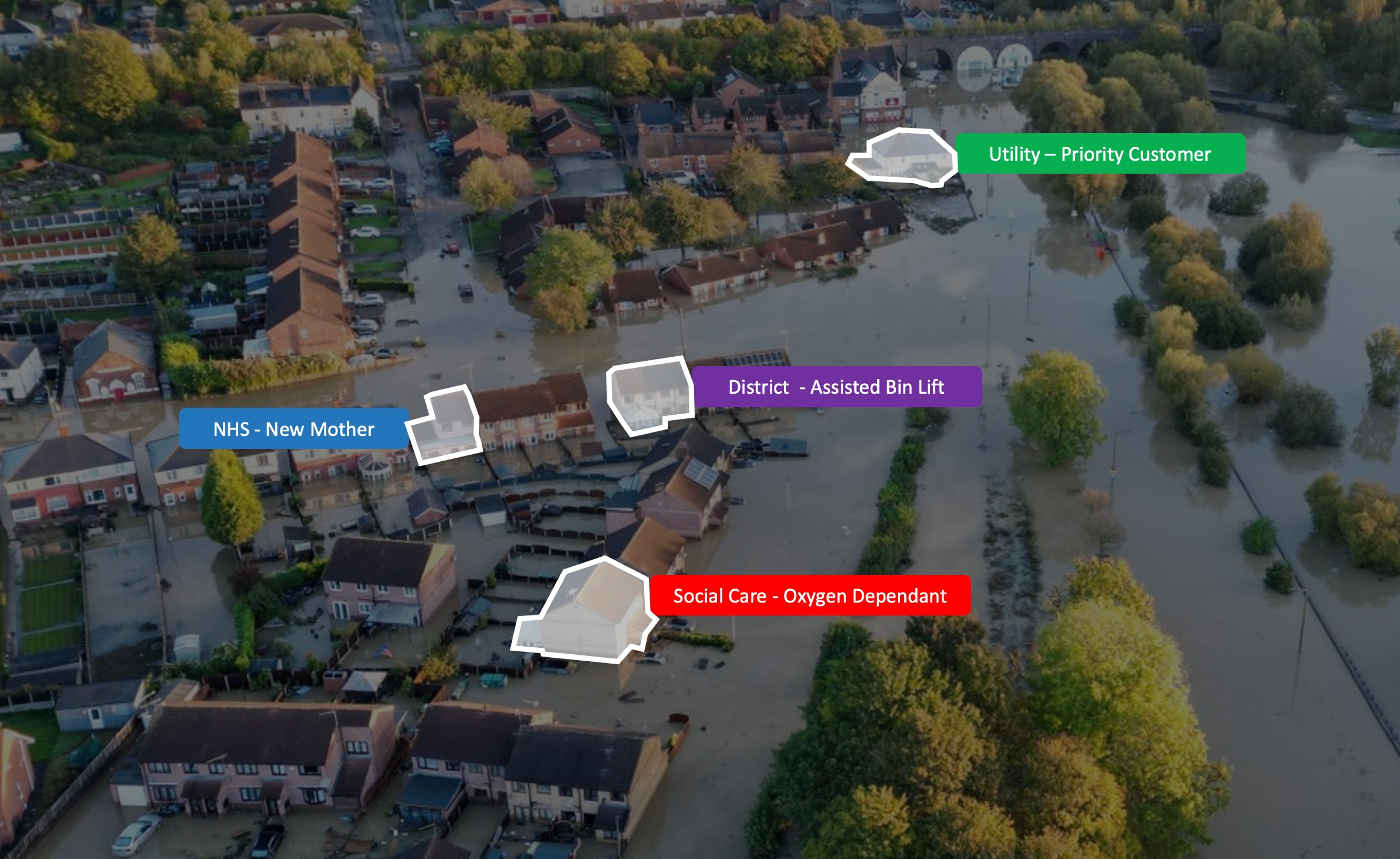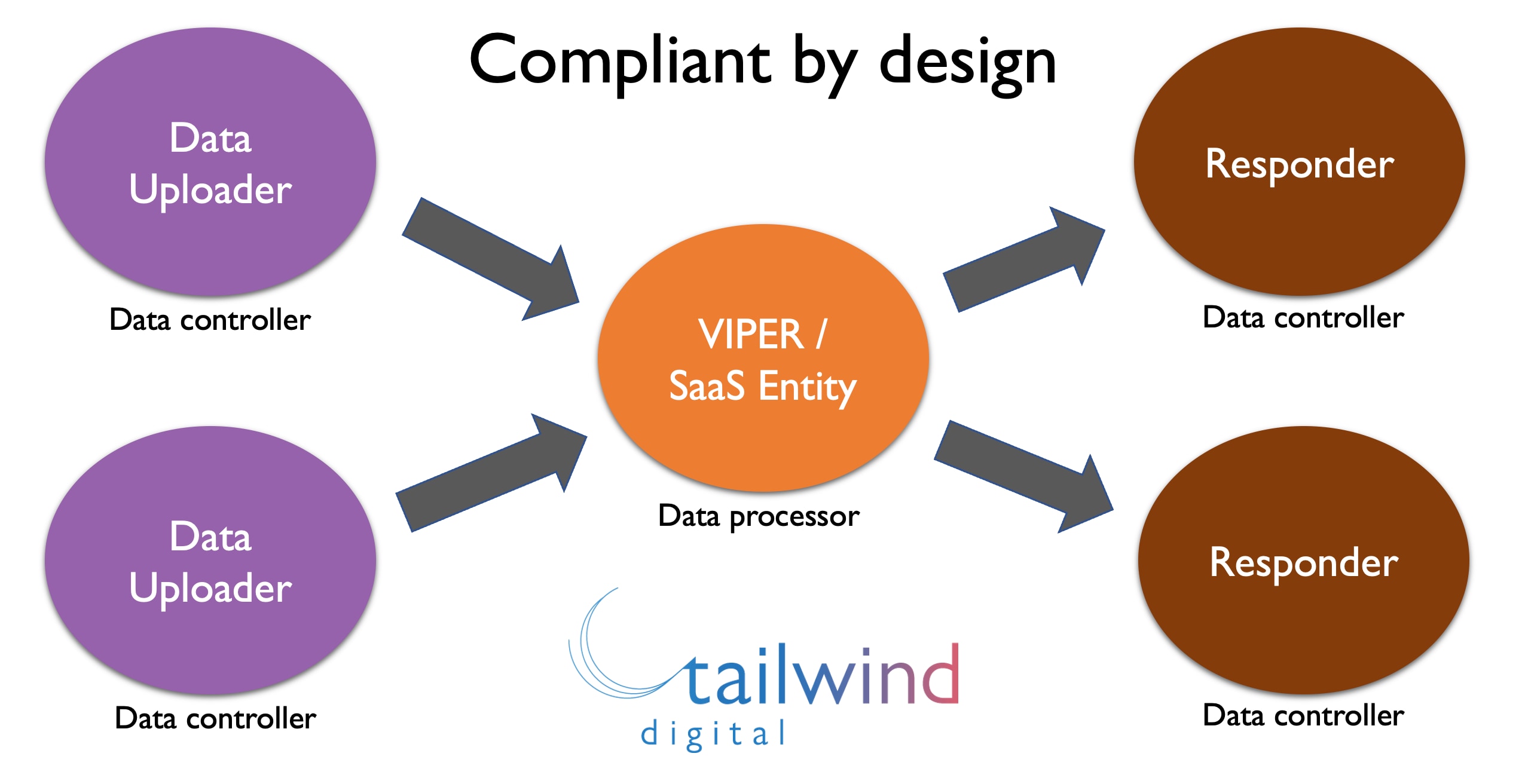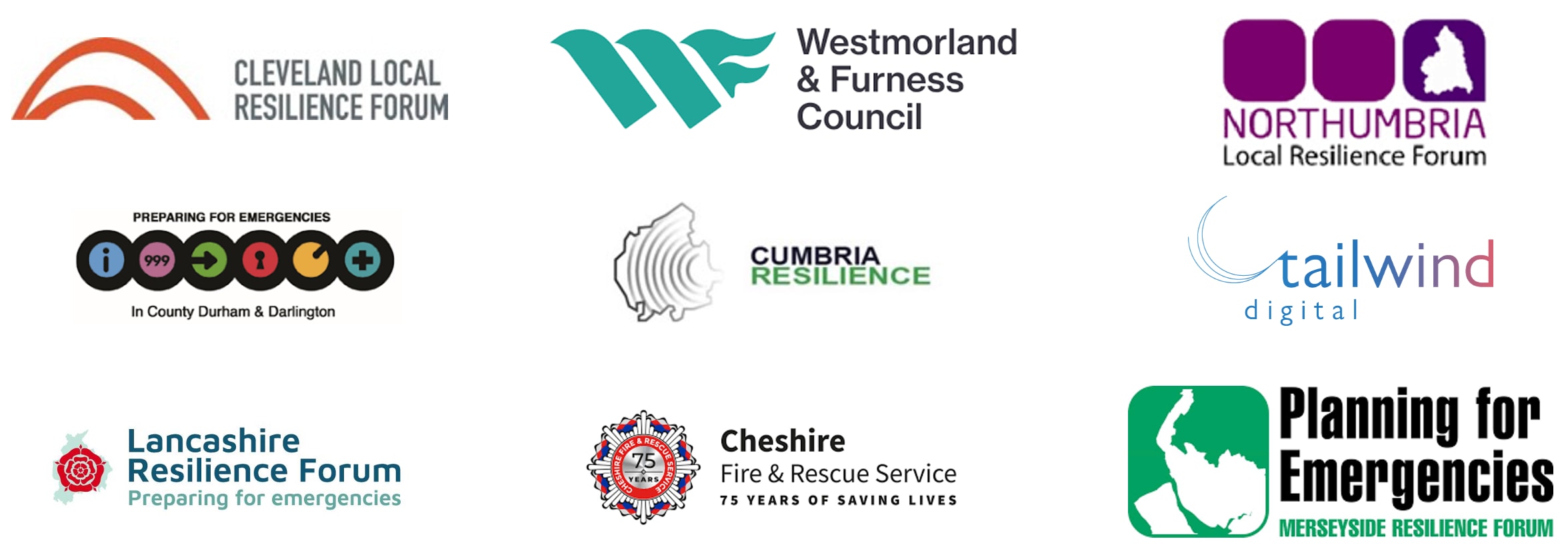VIPER project delivery partner
Quickly identifying people who need help assistance with a digital list of lists.
Working with Local Resilience Forums to facilitate the expansion of a system to identify vulnerable people during emergency incidents across Northern England
Introduction
In an emergency, LRF partners need to identify vulnerable people most in need of support. Data about vulnerable people comes from a variety of authorities and organisations. Historically, deduplicating and sorting this data was a manual, costly, and inefficient process often using paper-based methods at a time when a swift response is essential.

VIPER (Vulnerability Indicators for Properties in Emergency Response), a digital system that had been prototyped in Cumbria, identifies the most vulnerable residents, so that first responders can act accordingly. It does this by preparing the data in peacetime and only accessing it in an emergency. The data is about properties not people and it is securely shared.
Following the success of VIPER in Cumbria, further funding from the Local Digital Fund enabled a proposed expansion of the project into 3 additional LRF areas – Cleveland, Durham & Darlington and Northumbria.
Tailwind Digital was approached by the Local Resilience Forums (LRFs) to facilitate the project.
Exploring the scalability of Cumbria’s digital solution by duplicating it across more regions presented a host of inter-agency data sharing concerns alongside complex technological and financial implications, including that emergencies and incidents do not respect geographical borders.
As public sector technology experts with a wide experience in digital leadership, human-centred design and collaborative working, Tailwind Digital were brought on board as a delivery partner to help the LRFs to navigate this complex development.
Background
In the event of an emergency or critical incident, LRFs are tasked with enabling agencies and organisations involved with emergency response to identify properties in which one or more residents may be vulnerable or susceptible to harm. Key questions to answer at the time of an emergency are “Who do we help first?” and “What help do they need?”.
Currently, this information is sourced from a variety of locales in numerous formats making the process labour intensive, cumbersome and expensive with a large potential for error. Under the current system, it can often take 1-3 days to respond to data requests in an emergency, not taking into consideration weekends or public holidays as it requires data analysts who are not available on stand-by rotas.

VIPER presents a solution to the time-consuming manual aggregation of data and the costly analysis of “list of lists” collated statically and conducted each time an incident occurs. A great benefit in the deployment of VIPER is a shared picture of live intelligence throughout all the stages of an emergency, where statuses can be updated and notes for each property can be collated in one place. Not only is this information valuable at the time of an event, it also is useful in future support planning and risk assessment.
The Cumbria system used the Vital Interests clause of GDPR as its legal basis for data sharing. The initial plan for the expansion of VIPER was to take a copy of the Cumbria system and deploy a separate instance to each of the other LRF areas. The Local Digital Funded project aimed to work collaboratively across LRF partners to explore this approach and investigate the challenges and barriers.
Tom and Seb’s existing experience working with Local Resilience Forums and Local Authorities was key to understanding the complexities of the project
Case Presentation – What Did Tailwind Digital bring to the VIPER Project?
While LRF partners had clear ideas of what they were trying to achieve with VIPER, technical help was needed to take their skills and experience in emergency planning and translate it into a digital solution language.
Straddling the disciplines of business analysis, software architecture and agile project governance, Tailwind Digital were able to provide the guidance and leadership necessary for the project partners to make complex decisions via a series of in-person and remote workshops.
Tailwind Digital implemented an agile delivery approach in two-week sprints, with regular workshops to encourage collaboration and participation. All organisations involved were identified and mapped, with polls for questions and relevant subjects created. Regular email updates provided further engagement with web-based material for users to share and MS Teams was introduced as a central cross-agency communication tool.
Thanks to the independent viewpoint that Tailwind Digital could provide, it became clear that expanding VIPER in its current state was going to present two key problems that created barriers to the project requiring Tailwind Digital’s specialist mediation and assistance: Inter-agency data sharing (legal obligations) and technical/commercial scalability (digital and fiscal implications).
Through the gathering of feedback, managing the expectations of everyone involved, and having an open approach to a solution focused outcome, Tailwind Digital was able to articulate the requirements of the project partners in the digital language needed to move the project forward.
Bringing enthusiasm and energy, Tailwind Digital formed an essential bridge that could translate plain English into the digital speech that helped us achieve our goals
1. Simplifying Data Sharing via a Central System
Rather than cloning the Cumbria solutions into the other LRF areas, Tailwind Digital proposed a single central system that would be used by all partners.
One of the main barriers to success for an expanded VIPER system was presented by Data Protection Officers responsible for the obligations of each data provider. They needed to ensure that data was only ever shared in a legally compliant and proportionate way. With a thorough understanding of these concerns Tailwind Digital, alongside an independent external legal advisor, Louis Sebastian from Trowers and Hamlins was able to establish a paradigm shift in data-sharing principles, that was supported by the Data Protection Officers.
By moving away from the Vital Interests clause of GDPR and creating one agreement based on the Civil Contingencies Act (CCA), where property data would only ever be shared if that property was directly affected by an emergency, the centralised VIPER system acts as data sharing hub. This pivot from the Cumbria LRF prototype simplifies data sharing as it is no longer necessary to transfer information about vulnerable people between LRF Partners themselves. Responders would only be given access to data when thresholds defined in CCA and built into VIPER workflows have been met.

Demonstrating that data could be limited to household level only, the project team with Tailwind Digital’s assistance then developed a template data sharing model to help map out the organisations in the North East that hold data on vulnerable people, and their ability and openness to share this in an emergency response situation.
Using test data, the mapping functionality of VIPER in an emergency is illustrated, indicating vulnerable properties with marker pins. Furthermore, using test data as a pre-incident tool, it was able to aggregate households into a cross border geographical areas while maintaining anonymity and providing valuable information to LRF planners in risk assessment scenarios.
By listening to our ideas and outlining the options available with a “security first” stance, Tailwind Digital’s approach allowed us to see the possibilities and added confidence to our project as a whole
2. Technical and Commercial Scalability
In workshops facilitated by Tailwind Digital, it became clear that the planned expansion of geographical boundaries would lead to an increase in the numbers of partners and associates joining the project via new LRF organisations, and a more scalable system would be required.
It was the role of Tailwind Digital to work with project partners to help them understand the consequences of technology choices during the design phase.
This expansion to the requirements of the project has meant a fundamental change to the existing single LRF VIPER system with dynamic scaling becoming essential to a long-term sustainable solution with modern technology at its core.
By taking on board all the initial and potential objectives of the system offered by the different stakeholders, and forecasting the financial implications of scaling VIPER, Tailwind Digital was able to illustrate the medium-term costs of running the system. It was recognised that most of the time VIPER will be inactive, and therefore running costs should be minimal, while during an emergency the system would need to be highly performant. This led to the decision to enlist software development partners Audacia to create a solution suitable to the new requirements.
Tailwind Digital developed different potential costing models over a 5 year period, making it clear that a “build it yourself” central model, while requiring more capital investment and planning, provided a more cost effective and scalable outcome for stakeholders when compared to each partner organisation requiring a software licence.

Analysis
As the VIPER prototype contains test data only and is still in development subject to future funding, we look forward to seeing the project enter into a third phase where test data can be evaluated before being launched in a real emergency response.
Conclusion
Through their existing knowledge of digital solutions relevant to the project, it was the role of Tailwind Digital to expedite the expansion of VIPER across the new LRFs and facilitate the buy-in by all project partners, emergency responders, DPOs, pre-incident planners, risk assessors and public health managers cross the North of England.
Tailwind Digital provided much needed assistance in setting out options, exploring different solutions and establishing a change of direction. It became clear early in the project that with a “security first” approach, consensus was possible between all the stakeholders, and that the solution was going to look very different to the original prototype.
The practical experience of building multi-disciplinary collaborative project teams in a public sector context, and the technical understanding of how to deliver software at scale, allowed Tailwind Digital to quickly build the strong relationships required to lead and deliver the project, and the trust with all parties.
Tailwind Digital continues to advocate for and maintain momentum with all its stakeholders by implementing a roadmap, collaborating with software partners on the product build, generating user stories and encouraging the sharing of briefing notes. Currently the project is seeking further Local Digital funding to take it from prototype to production for LRF partners to use VIPER in real world emergency scenarios.
References
VIPER was funded by the Department for Levelling Up, Housing and Communities (DLUHC) Local Digital Fund.
You can find more information on the project website https://www.localresilienceviper.org/ and contact the project team via info@localresilienceviper.org
Additional information supplied by Local Resilience Viper Briefing Note 2 December 2023 and Project report May 2024.
